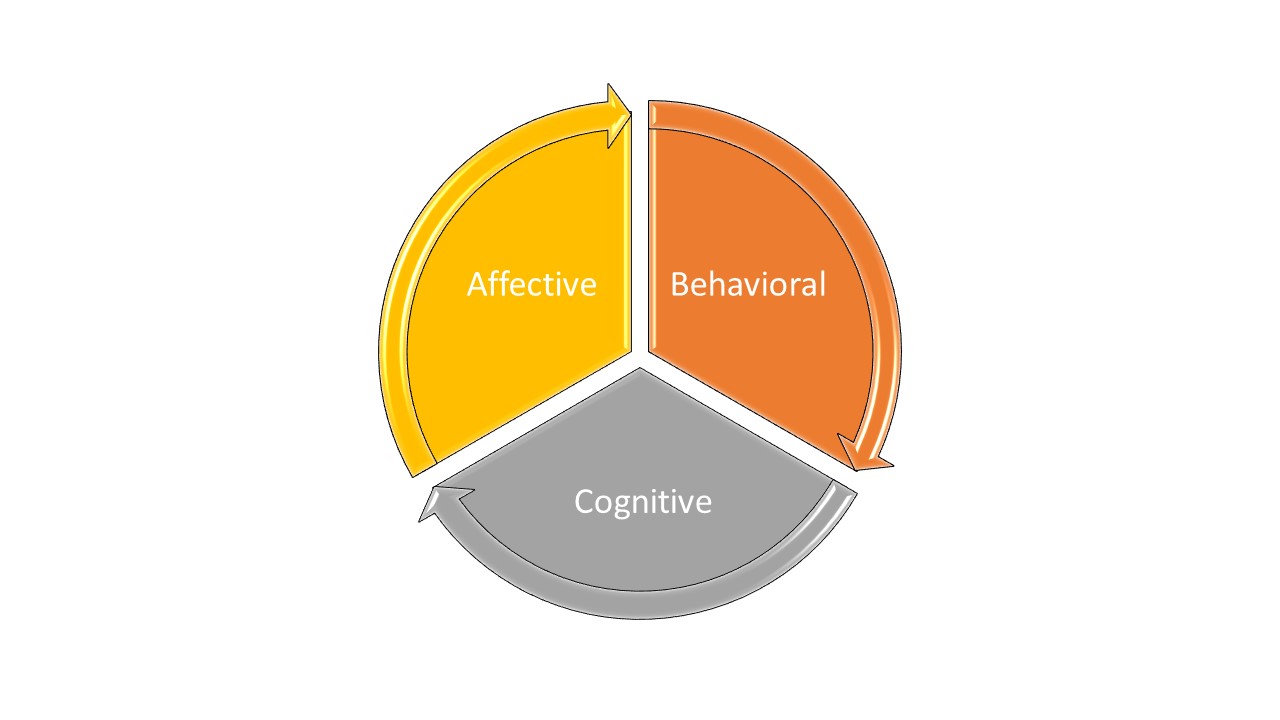Separating affective, behavioral, and cognitive components to drive total employee engagement
- 5 Min Read
Engagement researcher Paul Spector breaks down the ABCs of total employee engagement through four approaches: Job-person fit, allowing flexibility, empowerment, and motivation through rewards
- Author: Paul Spector
- Date published: Aug 25, 2023
- Categories

A quick Google of “employee engagement” gets me 44 million hits. That is a lot to wade through for a manager who just wants to know how to engage their people. So, what are the fundamentals of total employee engagement?
Engagement research colleagues and I have done showed that three separate components of employee engagement are all important. Your people need to be engaged at the affective, behavioral, and cognitive levels to be totally engaged at work. You can achieve this with a comprehensive strategy that looks at who your people are and how best to manage them.
The ABCs of total employee engagement
Engagement consists of three separate components that work together to produce total employee engagement.
- Affective engagement refers to how people feel about their work. Do they enjoy what they are doing and feel it is important, or do they find their work to be boring and meaningless?
- Behavioral engagement is how much effort a person is putting into doing the job. Are they on time and on task?
- Cognitive engagement is how much the job occupies people mentally. Are they paying attention to what they are doing or are they dialing it in while their mind is somewhere else?
The fully engaged employee has a high level of motivation and works hard in a rewarding job that captures their attention. Of course, an employee can be only partially engaged. For example, someone might be working hard but not paying attention to what they are doing, perhaps because they find the job boring. They might produce a lot, but the quality is poor because their mind is not on the job. Another employee might enjoy the work but have low motivation, perhaps because there are few rewards, and so they underproduce.
To be effective an engagement strategy needs to focus on building all three engagement components. It is not enough that people work hard and are on task. They should find meaning in the work and be mentally occupied. There are four approaches that managers can take to build total engagement.
Total employee engagement through good person-job fit
The first line of defense in building engagement is to be sure that the people you place in positions are suited to them.
Many companies use pre-employment assessments to match people’s talents to job requirements—the KSAOs (Knowledge, Skill, Ability, and Other characteristics). Most of the time the focus is on the KSAs—what a person knows and what they can do. This makes sense because employees with the needed skills have what it takes to be successful, which adds to motivation and engagement. But having the right mix of talents is not enough.
Often neglected are the other characteristics that include interests and values. Matching interests and what people enjoy with a job can be particularly important in building affective commitment.
Allow flexibility
Encourage engagement by building flexibility into the job so that a person can do more of what they enjoy and find meaningful. Job crafting is one strategy that allows employees to modify the job within limits so they can make the job more interesting. Employees might be allowed time on community service or a special project, or they might be encouraged to mentor new hires. Two employees might trade tasks if each enjoys doing something the other does not like. The key is allowing people the flexibility to “craft” their job, of course, assuming that they are also doing core tasks of the job.
Empowerment as a foundation
One of the best ways to build total employee engagement is by empowering employees, that is, by allowing them autonomy to decide how, when, and where to do the job. It begins by delegating responsibility to individuals and then holding them accountable for what they accomplish rather than how they accomplish it.
An important distinction here is between compliance where you force people to do their jobs and acceptance where you convince people that doing their jobs is the right thing to do. Micromanaging is a strategy that can be effective in achieving compliance but not acceptance. As long as you are watching them, your people will carry out your directives. When they think you are not watching, they are unlikely to comply, and might even do the opposite to what you want.
Empowerment achieves acceptance—once the person internalizes a goal, they will work to achieve it whether you are watching or not. Of course, there are limitations to how much autonomy you can give. Employees must follow certain protocols and keep to their schedules.
Within the demands of the job, however, there is always room to allow people some freedom to do their best without feeling micromanaged.
Building motivation through rewards
Rewarding people enhances motivation and engagement because the person will feel valued and what they are doing is important. Rewards do not have to be tangible things like money. Appreciation and praise can be powerful motivators, and they can provide feedback to employees that what they are doing is correct and important.
Managers should not be shy about telling employees that they appreciate their efforts and recognizing a job well done. It can seem awkward at first, but over time providing this sort of reward can become second nature.
Total employee engagement is the result of good leadership
Total employee engagement happens when managers provide good leadership. This begins by hiring the right person for the job and proceeds with providing a supportive work environment where people can thrive. Allowing flexibility, expressing appreciation, and empowering people, are all sound practices that make people feel valued, and are the foundation for total employee engagement.










